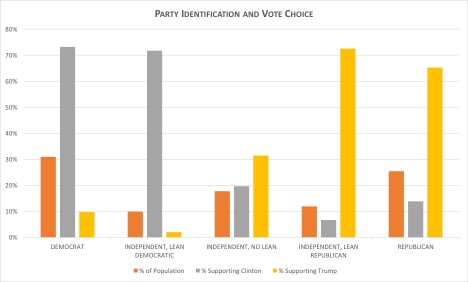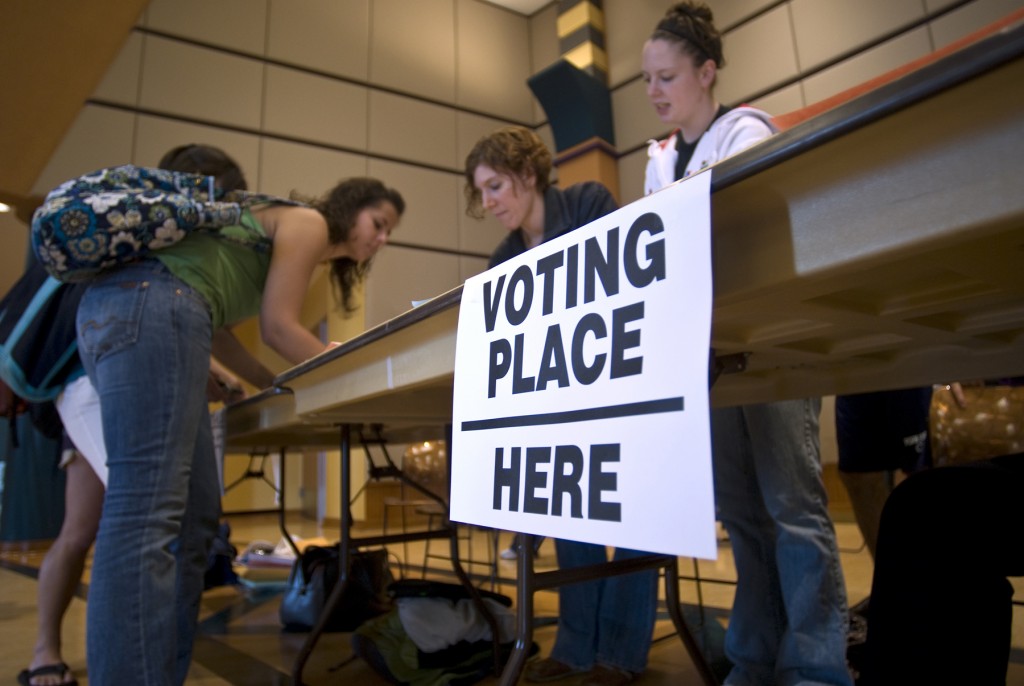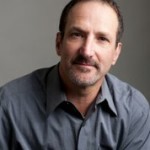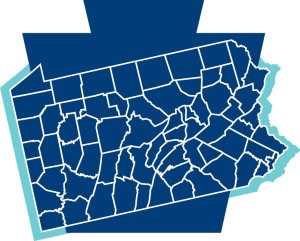Michael Berkman | Director of the McCourtney Institute for Democracy and Professor of Political Science
Political conventions focus attention on strong partisans. But not all Americans call themselves Democrats or Republicans, or for that matter Libertarians or Greens. Many prefer to think of themselves as Independents.

Michael Berkman
With the McCourtney “Mood of the Nation Poll,” we can look at these Independents in a unique way. The poll is a scientific survey that allows ordinary citizens to tell us what is on their minds, without being restricted to a small number of predetermined answers. It also includes standard polling questions such as party identification, allowing us to see who these independents are and what are they thinking about this campaign. The most recent poll posed a series of open-ended questions to a representative sample of 1,000 Americans between June 15 and June 22.
Determining who is an Independent is not straightforward. CNN, in its post-convention survey, reports that “28% described themselves as Democrats, 24% described themselves as Republicans, and 48% described themselves as independents or members of another party.” This is not far from our survey. Our breakdown shows a greater number of Independents (35 percent) than Republicans or Democrats.

Source: McCourtney Institute for Democracy “Mood of the Nation” poll
That’s a lot of Independents. But when we dig deeper, we find that they’re not all the same. There are actually three groups of independents: Those who lean Democratic, those who lean Republican, and what we might call “pure” Independents.
Leaners tend to vote as a partisan but do not necessarily want to call themselves one. For example, in our poll, 10 percent of the population calls itself Independent, but support Hillary Clinton at roughly the same rate as Democrats (this is before the convention), while they are even less supportive of Donald Trump then those who call themselves Democrats. The same is true among Republican-leaning Independents. They support Trump in even greater numbers than pure Republicans, and Clinton even less so.

Source: McCourtney Institute for Democracy “Mood of the Nation” poll
Once we remove the leaners there are actually fewer than 20 percent of the population who we can call true independents. This group is still in play, and important for creating a winning majority. What do we know about them?
Based on our data we can conclude the following:
- Relative to partisans and partisan leaners, true Independents are more likely to call themselves moderate. As the parties have polarized and sorted themselves into ideological camps, pure independents are likely uncomfortable in either party.
- They are younger than either party. Absent a long voting history, these younger voters have not yet found a partisan identity, and perhaps never will.
- They are less politically engaged: True Independents are less likely to be registered to vote (and therefore less likely to vote) and they acknowledge paying less attention to the news.
But our open-ended questions allow us to go deeper. In particular, we asked them what if anything made them hopeful about American politics, and what made them angry. Their answers suggest they are greatly hostile toward contemporary American politics, and they have little hope that this election will improve things.
When asked what they were angry about, pure independents were most likely to answer simply “everything.” But after that, they go through a series of responses that suggest disillusionment with politics. Close to half of them (47 percent) gave an answer that suggested anger with politicians or the system. They think the system is rigged, they consider politicians to be liars who break promises and they are angry about what they see as bickering and fighting among politicians.
These quotes were typical of the independents we surveyed:
- A 52 year-old women and self-described “homekeeper” from Minnesota who pays little attention to politics and who is not registered to vote wrote: “Nobody really listens they say what they think you want to hear and make promises they can’t keep. They need to remember everyone has to work together to get things done and they can’t make a blanket statement to try to cover everything, they have to work ach [sic] problem out and know they are doing the best they can.”
- A 62 year-old retired man from California who pays attention to politics “some of the time,” calls himself liberal and who is registered to vote wrote: “I hate it when they reveal each other’s dirty laundry, especially when they all are guilty of lying, and not living up to their promises.”
Given Independents hostility to politics they seem like they could be ripe for the picking by the Trump campaign. His is an “outsider” campaign that regularly disparages traditional politics, and Hillary Clinton is a long-standing practitioner. Our latest poll shows that Trump is leading in this group.
On the other hand, these pure independents hold out very little hope for American politics. Unlike partisans — who can point with some hope to their party’s candidate winning — when we asked pure independents what they were hopeful about, a whopping 61 percent said “nothing.” Given that fewer independents are registered and many do not pay attention to politics, they are far from a sure bet.
As the election proceeds, we will continue to track this group, and see whether either campaign can address their concerns about a system that is corrupt and not working, and break through their prevailing sense of hopelessness.







